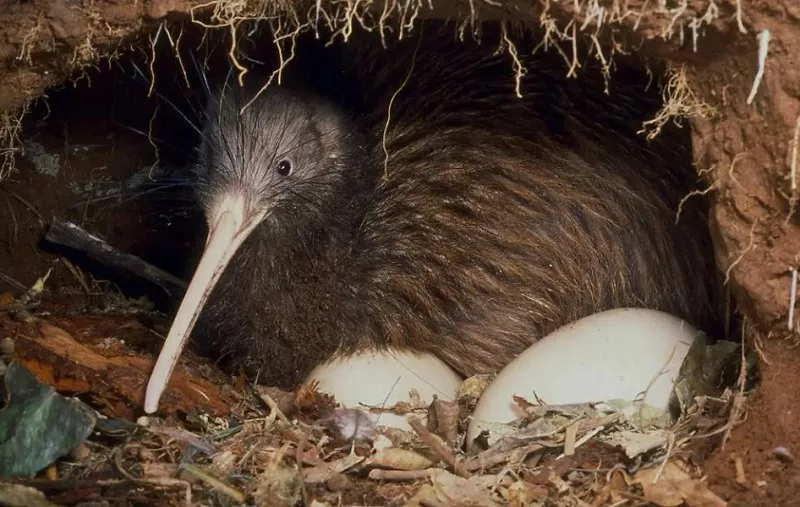The kiwi, a flightless bird native to New Zealand, is known for its unique appearance and delicious fruit. But have you ever wondered how big a kiwi egg is? In this article, we will explore the size of a kiwi egg and what makes it so remarkable.
Kiwi birds are fascinating creatures that have been around for millions of years. They belong to the family Apterygidae, which means “without wings.” There are five different species of kiwi, each with distinct characteristics, but they all share one thing in common – their eggs are enormous in relation to their body size.
What is the size of a kiwi egg?
The kiwi egg is one of the largest eggs relative to the size of the bird that lays it. In fact, kiwi eggs are six times larger than chicken eggs, despite the fact that kiwis are only about the size of a domestic chicken. On average, a kiwi egg weighs around 15%-20% of the mother’s body weight.

Kiwi Egg Size
The size of a kiwi egg varies depending on the species and the age of the female. Larger species of kiwi tend to produce larger eggs, while smaller species lay comparatively smaller eggs. On average, the dimensions of a kiwi egg range from approximately 75 to 110 millimeters (3 to 4.3 inches) in length, making them one of the most substantial eggs in the avian world relative to the size of the bird.
Why are kiwi eggs so big?
So, why do kiwi birds lay such large eggs? One theory is that the size of the egg is related to the bird’s flightlessness. Because kiwis cannot fly, their eggs need to provide more nutrients to the developing embryo to ensure its survival. The yolk of a kiwi egg is proportionally larger than that of a chicken egg, providing the developing chick with a greater supply of nutrients.
Another reason kiwi eggs are so large is that they have a long incubation period. Kiwi eggs take around 70 to 80 days to hatch, which is longer than most other bird species. The bigger the egg, the more nutrients it contains, and the better chance the chick has of surviving until hatching.
How do kiwi birds lay such large eggs?
Laying such large eggs can be a challenge for kiwi birds. Female kiwis have a single functional ovary, unlike most birds that have two. This means they can only lay one egg at a time, making each egg incredibly important. Once the egg is ready to be laid, the female must pass it through her oviduct and cloaca, which can be a difficult and exhausting process.
Interestingly, male kiwi birds also play a role in incubating the eggs. After the female lays the egg, she passes it off to the male, who takes on the responsibility of incubating it for the next 70 to 80 days. During this time, the male kiwi will not leave the nest and will fast, surviving solely on his fat reserves.
Conclusion
In summary, a kiwi egg is one of the largest eggs relative to the size of the bird that lays it. It weighs around 15%-20% of the mother’s body weight and is six times larger than a chicken egg. The size of the egg provides the developing embryo with a greater supply of nutrients, which is essential for survival during the long incubation period. Laying such large eggs can be a challenge for female kiwis, and males play an important role in incubating the eggs. Overall, the unique characteristics of the kiwi egg make it an interesting topic for study and appreciation.


 Facebook
Facebook  Instagram
Instagram  Youtube
Youtube 